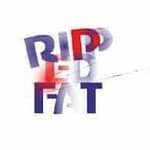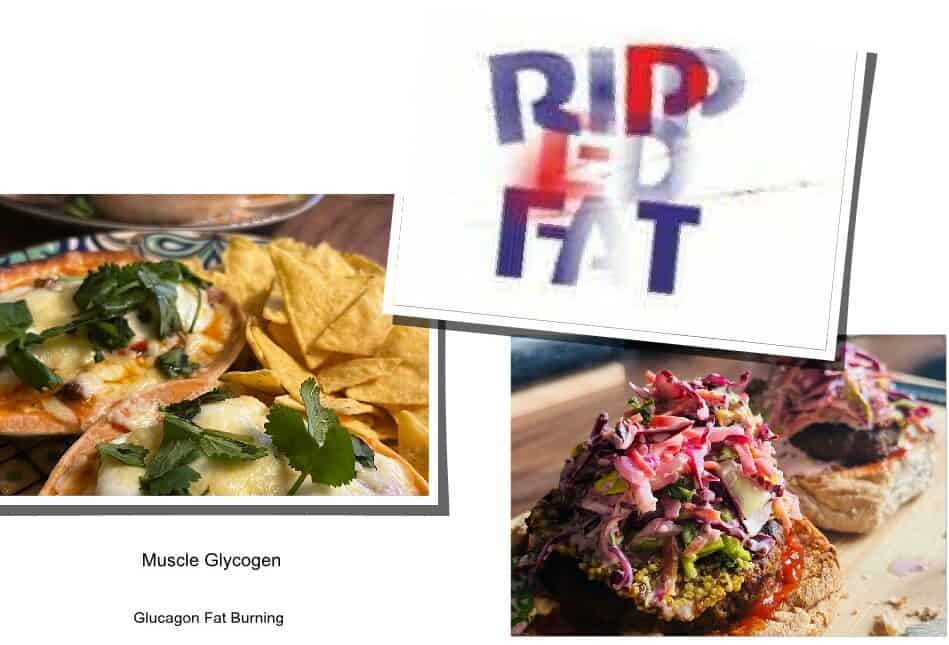RIPPEDFAT

Intermittent fasting can serve as an effective strategy for fat loss and muscle gain. This approach limits the eating period to a window of sixteen to eighteen hours daily without food intake. It allows the body to detoxify and promotes weight loss through reduced calorie consumption.
During the eating window, it’s important to consume dietary fats, proteins, and carbohydrates associated with alternate fasting and muscle gain due to the caloric deficit, which helps maintain muscle mass.
While intermittent fasting can aid in reducing body fat and maintaining leanness, it should be paired with strength training and a diet rich in carbohydrates, proteins, and fats to facilitate muscle growth.
Carbohydrates associated with muscle growth when you exercise the body breaks down glycogen the stored form of glucose (a carbohydrate) when your body needs energy. When you dont get enough carbohydrates your body will pull back because your muscles dont have enough energy to perform at it’s best.
Get A Shaplier You
Preserve Muscle
During exercise, your body may initially appear flatter as muscles seem smaller due to the lack of glycogen filling them, which normally adds fullness. Consequently, there may be a slight decrease in strength, particularly during cardio workouts. It’s advisable to engage in light heart rate exercises for extended periods of cardio to enhance fat burning, especially if the goal is to reduce body fat. Following a temporary reduction in carb intake, resuming higher carbohydrate consumption can lead to increased glycogen storage in muscles, aiding protein synthesis and muscle growth.
A substantial intake of carbohydrates is beneficial for nutrient delivery to muscles, accelerating muscle mass building or maintenance, and leveraging glycogen stores during strength training and intermittent fasting for muscle gain. In essence, consuming carbohydrates during intermittent fasts can significantly contribute to muscle preservation by rapidly replenishing glycogen stores in the muscles.
Carbohydrates
Dietary Fat And Protein
Alternate Fasting
Sculp Muscle Growth
Shrink Belly Fat
-
-
Protein plays a crucial role in retaining and building muscle mass. It’s composed of amino acids, which serve as the building blocks for protein synthesis.
-
Eggs are an excellent source of high-quality protein. They contain significant amounts of the amino acid leucine, which maximizes protein synthesis for muscle gain. Additionally, eggs provide other nutrients like phospholipids, omega-3 fatty acids, cholesterol, and vitamin D1.
-
Salmon is another muscle-friendly food. A 3-ounce serving of salmon contains about 17 grams of protein, along with omega-3 fatty acids and essential B vitamins1.
-
-
-
- During exercise, when your body depletes carbohydrates, it turns to stored fats as an energy source. This process helps maintain energy levels and supports muscle function2.
-
- Fatty acids, components of dietary fats, play a crucial role in promoting muscle protein synthesis and reducing muscle breakdown.
- Dietary fat and protein for muscle gain of healthy carbohydrates are crucial for optimal muscle growth, eating a correct balance will regulate glucose levels formed glycogen stored fat, in conjunction with resistance training, during and after work outs. Aim to consume 1.4–2 grams of protein per kilogram of body weight daily to maximize the benefits of alternate fasting and muscle definition.”
- Dietary fats and protein for muscle gain of healthy carbohydrates are crucial for optimal muscle growth, eating a correct balance will regulate glucose levels formed glycogen stored fat, in conjunction with resistance training, during and after work outs. Aim to consume 1.4–2 grams of protein per kilogram of body weight daily to maximize the benefits of alternate fasting and muscle definition.”
Intermittent Fasting
For Muscle Gain
Fat Carbs And Protein
Intermittent fasts for muscle gain are related to how dietary fat and protein are processed in the body. These macronutrients do not dissolve completely, but rather emulsify into smaller pieces that can be reformed into reusable fat. This fat can then be used as a source of energy or stored for later use. When the fat is metabolized, it enters the bloodstream and becomes available for energy production or storage. Eating more foods that are rich in protein, healthy fats and fiber can boost your metabolism and help you burn off your body fat more efficiently.
For those looking to shed excess body weight, it’s beneficial to combine fats and proteins or plant-based protein sources with plenty of fiber-rich, low-carbohydrate vegetables in your daily diet. This combination of top-tier fat-burning foods will help jump-start a metabolism boost, aiding in controlling hunger cravings. The principles are straightforward: foods rich in ‘ripped’ fats can burn fat more quickly, even for those with a slow metabolism. By consuming more fats, proteins, and fiber-rich foods in your daily meals, and fewer high-sugar carbohydrates, you can maintain both fat and muscle. You don’t need to be a top-tier muscle builder with a ripped belly to achieve a toned physique around your muscles.”
Bulk Up
MUSCLE UP
PAD OUT
Fatty Acids Fats
Protein Foods
Boost Your Load
Muscle Definition
Dietary fat and proteins are generally neutral and do not spike insulin levels. Fats do not dissolve completely in the body; they emulsify into smaller pieces and can reform into reusable fat, which may be utilized again as energy. Once metabolized, fats are released into the bloodstream and can be used for energy or stored. Incorporating a combination of high-quality proteins, fats, and fiber in your meals can lead to a more efficient metabolism, aiding in more effective fat burning.
Supplements are most effective when they complement key weight loss strategies, such as the inclusion of trigger burner foods to achieve a lean and toned physique.
A beneficial and gradual weight loss can be attained through a balanced diet that includes animal proteins, fats, and vegetable fiber carbohydrates. This approach not only supports weight loss but also muscle definition. The incorporation of protein and fat, along with adequate fiber, is crucial for daily nutrition as it significantly aids in maintaining stable blood glucose levels and is conducive to a ketogenic lifestyle. Avoiding sugar is important to prevent insulin spikes, which are commonly associated with unhealthy sugar imbalances after consuming fast-release carbohydrate foods that rapidly break down into the bloodstream.
Choosing a diet abundant in whole foods that facilitate rapid fat burning, such as a mix of protein, fats, and fiber-rich carbohydrates, can aid in maintaining blood sugar levels without causing insulin spikes. This method enhances metabolic efficiency, boosting a slow metabolism to prioritize fat over sugar for energy. The presence of fats and fiber in your meals contributes to sustained satiety, curbing daily hunger pangs. By integrating these key nutrients—protein, fats, and fiber—into your diet, you can activate the fat-burning hormone glucagon, which may result in decreased appetite, weight loss, and muscle growth in targeted areas like the abdomen, waist, hips, buttocks, and thighs.
Interim fasts and muscle gain incorporates a higher amount of proteins and fats, both saturated and unsaturated, into each meal, along with ample fiber, can stimulate the production of the hormone glucagon. This hormone facilitates fat burning and reduces appetite by promoting the release of insulin from the body. Initially, glucagon is produced in the gut in response to dietary protein, which activates as a fat-burning hormone and mobilizes energy from fat cells stored as glycogen, thereby depleting insulin levels. Furthermore, foods that trigger glucagon production can include saturated and unsaturated fats in their natural, whole food form, rather than processed derivatives.
Fats, when present in whole foods in their natural state, are neutral and do not cause insulin spikes, thus preventing blood sugar imbalances and fat storage. Conversely, the hormone glucagon, which acts as a fat burner, has an effect that is opposite to that of glycogen, which triggers insulin spikes; glucagon aids intermittent fasting as a natural fat-burning mechanism. Combined with a sensible eating plan for weight loss, a diet high in fiber, protein, and fats can activate a sluggish metabolism. Ideally, these fats should come from grass-fed or organic animal products, in line with many popular weight loss programs available today.
Glycogen
Pad Out Bulk Up
Muscle Gain
Vs
Glucagon
Burn Fat Shred Fat
Fat Burning
Dont Think only Weight loss Think Hormones And ThEir function
